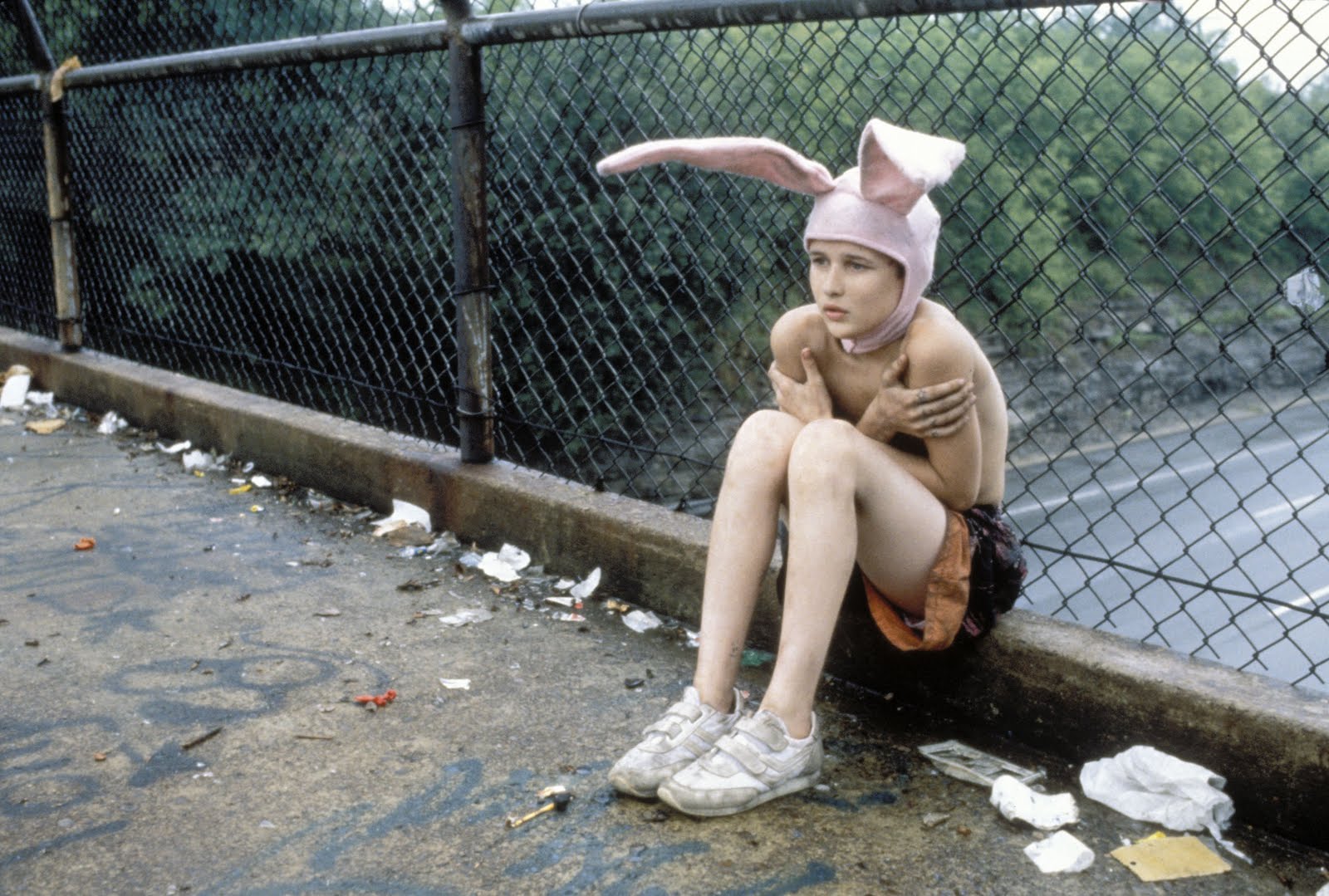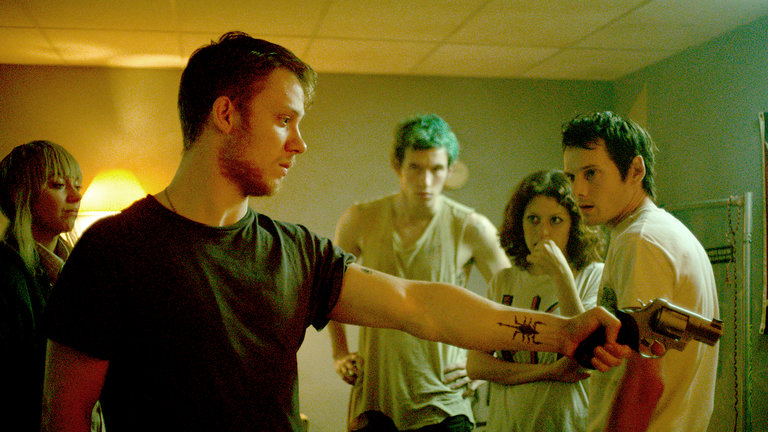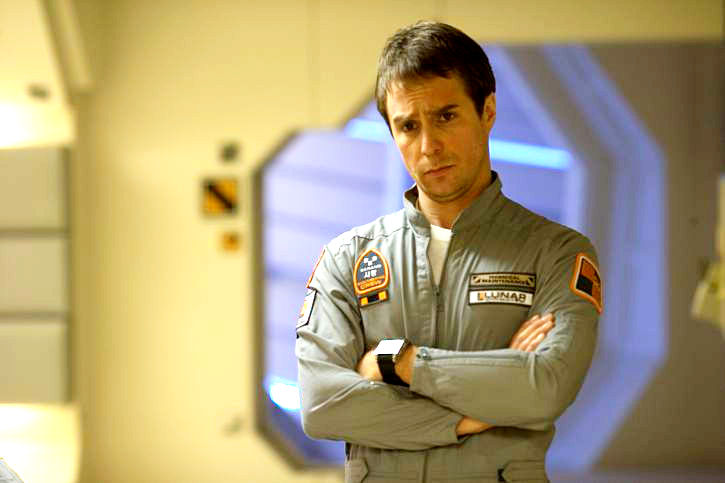6. Gummo (1997)

Harmony Korine unsurprisingly makes multiple appearances when it comes to films with a fraught relationship with their audiences. Gummo, unlike The Beach Bum (2019), makes no attempt to appear as a series of tropical gallivants.
Korine gives us an unapologetic and unrefined examination of an impoverished town in Ohio that is yet to overcome the desolation left in the wake of a tornado. Scenes of graphic violence against animals and abuses against various inhabitants of the town are woven together not with plot, but with a far-reaching and seemingly unending sorrow.
The film provides a glimpse into the lives of its characters, but does not allow us the satisfaction of convincing ourselves that there is an end in sight. There is no beginning, middle, or end, just a vast expanse of aimlessness that a portion of forgotten population must call their existence.
Korine himself makes an appearance in the film as an intoxicated man, a scene that falls within a series of scenes with no apparent underlying message or meaning. In viewing Korine’s work, we are forced to briefly lead an empty existence.
7. Green Room (2015)

Starring the late Anton Yelchin, Green Room centers on a punk band called “The Ain’t Rights” who, after their gig is cancelled, end up in a neo-Nazi bar in the woods of Portland. After one of the band members sees one of the neo-Nazi’s stab someone in the green room, the band is held hostage as the owner of the venue deliberates what to do with them. The remainder of the film involves a tense and desperate attempt at self-defense and escape.
There is an air of doom to the film, epitomized in the scene where the band is negotiating through the door of the green room with the bar employees; the neo-Nazis attempt to convince the band to open the door, but the band refuses unless they are given the gun the neo-Nazis confiscated.
The neo-Nazis then hand the pistol over to the band, as if to say, here you go, but it won’t help you much. The hostage situation is enough to unsettle, but there is little more terrifying than a character who is armed and still helpless. The premise of the film is simple, but viewers who choose to root for the protagonists have little hope to cling to.
8. Dogtooth (2009)

Yorgos Lanthimos film about a husband and wife who isolate their children from the world and feed them misinformation leaves the viewer with more questions than it answers. Lanthimos combines a fragile naiveté with subtle and pervasive violence set against a crisply clean suburban backdrop.
The adult son and two teenage daughters are at the whim of their parents, whose disturbed approach to parenting seems to have no obvious motive; the children are taught incorrect labels for objects, and forbidden from leaving the family’s property to no purported benefit to the parents.
The most unsettling aspect of the film is somehow not the convoluted and twisted abuse, but watching the three interact with one another within the small section of the world they inhabit.
Lanthimos has stated that the film stems from his ideas of how the nuclear family has and will continue to evolve, but there is also much to be investigated about the nature of identity as well; how would the personalities of three individuals who interact solely with one another and their parents (and one person of their parents choosing) develop with almost no outside influence.
Another variable to this facet of the film arises when one of the daughters gets ahold of a Hollywood VHS and watches them in secret, and ends up performing choreography from Flashdance (1983). The scene is surreal and unsettling in its minimalism; the brief injection of Hollywood into the sterile bit of suburbia is uncanny and disturbing.
While the viewer may find themselves desiring an explanation for the absurdity and abuse, there is something underlying throughout the film that tells us that an explanation will not provide tranquility.
9. Paris, Texas (1984)

Paris, Texas is a both a road movie and a western in some sense, but both descriptors fail to do justice to Wenders’ 1984 film. Harry Dean Stanton plays a nomadic amnesiac named Travis who reunites with his estranged brother and his seven year old son, Hunter, who his brother had previously adopted. Travis and Hunter embark on a journey to find Hunter’s mother, unbeknownst to Hunter’s adoptive parents.
Themes of loss and reunion pervade, echoing throughout the expansive Texas setting. Ultimately, Travis wants to see Hunter reunited with his mother, but beyond this, he displays no concrete desires. There is wistfulness about the film, a floating quality that might devolve into stagnation or sappiness if it weren’t for the depth of performances and honesty of storyline. Paris, Texas capitalizes on the cliché “the journey is the destination”.
10. Moon (2009)

Sam Rockwell plays Sam Bell, who’s nearing his three-year solitary stint mining helium-3, a fuel source, on the moon. Sam begins to hallucinate, and the identity crisis he experiences becomes more of a driving force in the film than plot itself.
The idea of memory, experience, and freewill swirl together in a disorienting haze and culminate with ultimate question of what it means to be someone, anyone. The film disambiguates the elements of one’s identity without explanation – if we’re an amalgam of our experiences and memories within our physical being, what separates a clone from its original? And how does this change our motivation?
Moon has been lauded for its scientific realism, which, combined with its intense surrealism toss the audience into the throes of the uncanny. The philosophical quandaries brought about by the film seem all the more imminent and relevant by the believability of its initial premise as well as its temporal vicinity to the present.